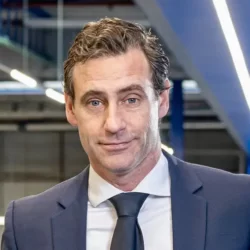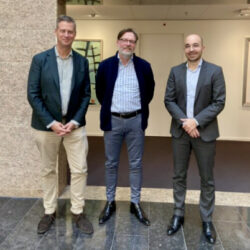Eriks optimizes its European supply chain

As part of its clear supply chain strategy, industrial service provider Eriks asked logistics consultancy firm Groenewout to analyse the options for a single, central European supply chain, including investment proposals. It was a complex project that was not without its challenges. “But the benefits definitely make it all worthwhile,” says Remco van Haastrecht, European Supply Chain Director.
Eriks is one of the world’s biggest industrial service providers. The company offers a wide range of technical products, co-engineering, customization solutions and related industrial services. Although it’s active in 18 countries, the majority of its business comes from Europe, where it has 20 logistics and production facilities which accounted for three quarters of the company’s revenue last year. It serves 90,000 customers in a wide variety of industrial segments: from food processing and transport to energy and chemicals.
“Every country has autonomy; that’s one of the keys to our success,” says Remco van Haastrecht (pictured). “However, the flipside is that local autonomy also means a degree of sub-optimization in the organization, and that can lead to ever-increasing problems as you continue to grow.” Eriks decided to ask Groenewout to revisit a study that the consultancy firm had initially conducted back in 2016. Van Haastrecht: “We asked Groenewout to investigate the potential for a single European supply chain, based on consolidated stocks and fewer locations – which would of course then be optimized for their new functions. Our gut instinct told us that the potential was there, but needless to say we wanted to know for sure before making any decisions.”
Retrofit studies
Groenewout analysed all the relevant production and logistics data – from the number of SKUs and the inventory levels to the total amount of storage space, the goods flows and the stock turnover ratios. The conclusion was clear: it would definitely make sense to consolidate the European stocks into a single supply chain. “So our gut feeling was right – just as it had been in 2016, but the organization wasn’t mature enough for it back then. We were now ready to push ahead with this idea,” continues Van Haastrecht.
From an investment perspective, Eriks wanted to change as little of the existing infrastructure as possible. The company asked Groenewout to prepare an investment proposal and to conduct a number of retrofit studies, including for its facilities in Rijnmond, Capelle and Alkmaar. Besides assessing the impact of a single central European supply chain for each location, the studies also examined the possibilities for improving the process efficiency, the available space, the layouts, possible automation options and the necessary level of investment. “In effect, for each location we looked at what exactly would be required for an efficient, future-proof operation,” says the supply chain director.
Local optimization
For example, Groenewout performed a feasibility study for the facility in Alkmaar taking account of new operational processes, volume growth and opportunities for logistics optimization. The consultancy firm analysed existing goods flows, processes and data as the basis for preparing new logistics concepts, including various financial scenarios and an investment plan. Van Haastrecht: “The analysis of our existing flows and figures provided tremendous insight into the operation. Then on top of that, overviews of various scenarios, what-ifs and cashflow situations gave us all the information we needed to make the right decisions,” adds Van Haastrecht.
“Additionally, we now have a concrete calculation of how many square metres we require based on various product range and order profiles, including growth scenarios, plus we know precisely what the construction-related limitations are,” he states. And thanks to the new logistics concept, Eriks is also ready for the planned SAP EWM implementation.
New European supply chain structure
The various retrofit studies formed the basis for preparing a business case per location. They were then combined to create a single master plan which was presented to the parent company, SHV, who approved the plan and gave the green light for the business transformation.
Eriks expects to be able to reduce its inventory by 15-25% thanks to the new European supply chain structure, while also improving its performance level from 80 to 95%. “That means more of our customers will receive their orders on time and in full,” he explains. Moreover, the logistics costs for the supply chain operations will decrease by 10 to 12% percent – and the company would not have been able to achieve that without Groenewout, according to Van Haastrecht.










